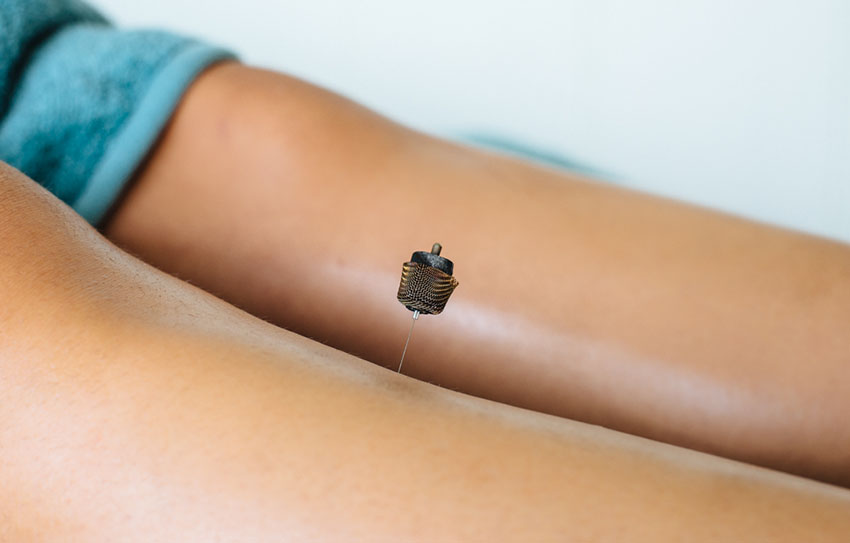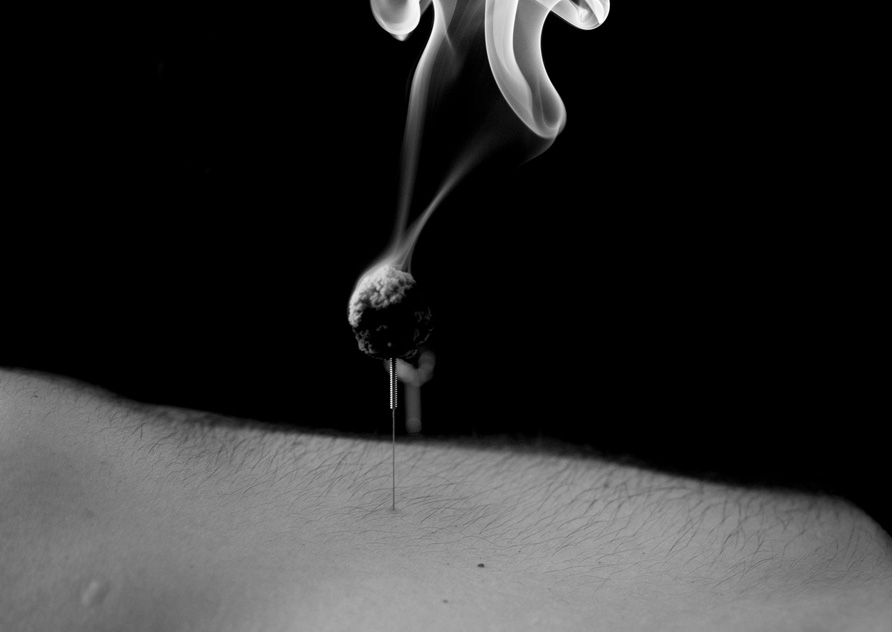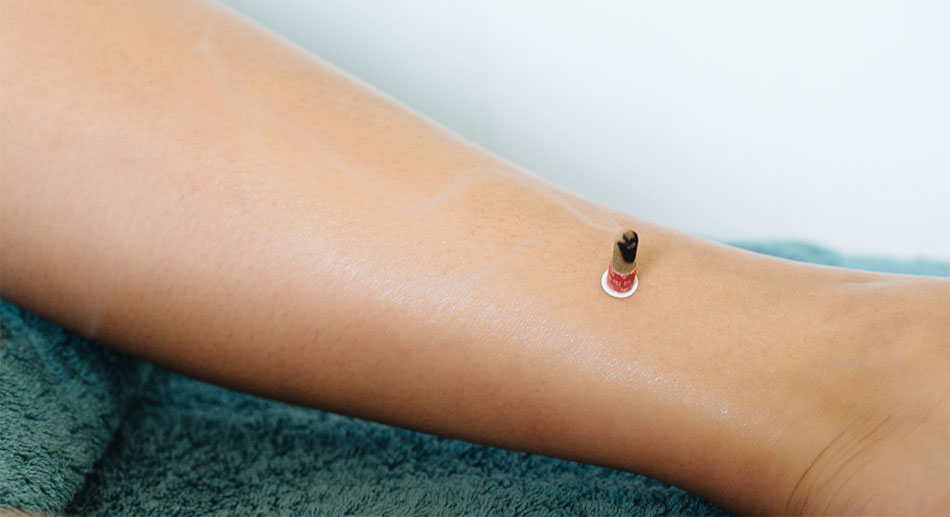Moxibustion is a traditional Chinese medicine technique that involves the burning of mugwort, a small, spongy herb over the skin to facilitate healing. The purpose of moxibustion, is to strengthen the blood flow, stimulate the flow of oxygen and blood, and maintain general healthy immunity.

How does moxibustion work? Does it hurt?
The most common way that this herb is used is where by the practitioner lights one end of a moxibustion (moxa) stick, roughly the shape and size of a cigar, and holds it close to the area being treated for several minutes until the area feels warm. Another form of indirect moxibustion uses both acupuncture needles and moxa. A needle is inserted into an acupuncture point and retained. A small ball of moxibustion is placed on the tip of the needle and ignited. This generates heat to the acupuncture point and the surrounding area. After the desired effect is achieved, the moxa is extinguished and the needle removed.

What is moxibustion used for?
In traditional Chinese medicine moxibustion is used on people who have some types of arthritis, pain or cold in an area of their body. The burning of moxa is believed to expel cold and warm the acupuncture meridians, which leads to smoother flow of blood and oxygen. In Western medicine, moxibustion has successfully been used to turn breech babies into a normal head-down position prior to childbirth.

Breech presentation: 1. Neri, I., Airola, G., Contu, G., Allais, G., Facchinetti, F., & Benedetto, C. (2004). Acupuncture plus moxibustion to resolve breech presentation: a randomised controlled study. Journal of Maternal, Fetal and Neonatal Medicine, 15, (4), 247-252. 2. Cardini, F. & Weixin, H. (1998).
Moxibustion for correction of breech presentation. Journal of the American Medical Association, 280, 942-946. Labour and pre labour: 1. Rabl, M., Ahner, R., Bitschnau, M., Zeisler, H. & Husslein, P. (2001).


